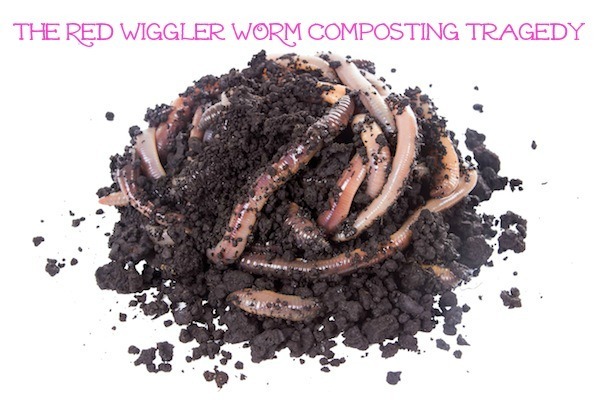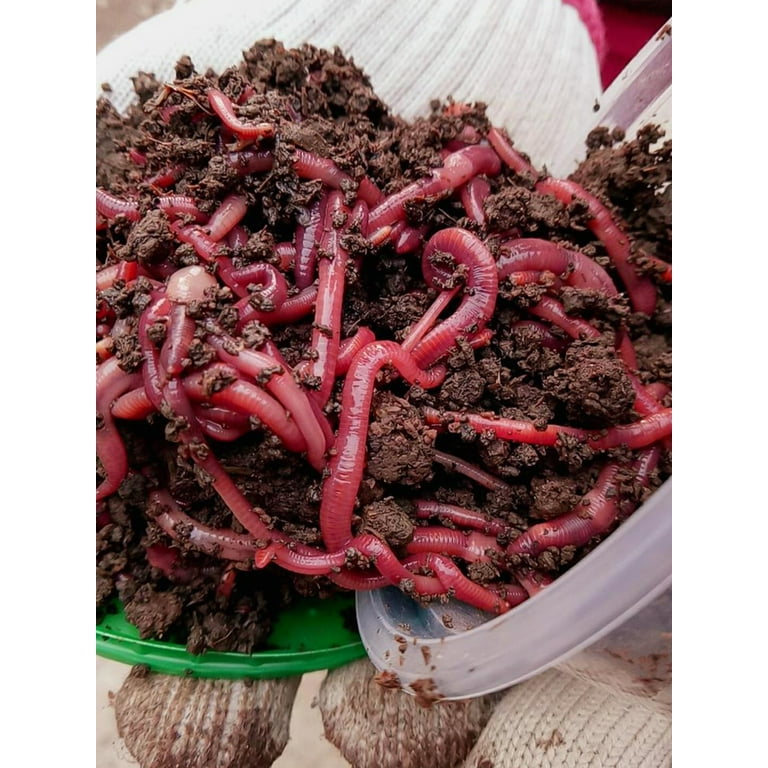Red Wiggler Composting: How to Begin and Maintain an Efficient Worm Container
Red Wiggler Composting: How to Begin and Maintain an Efficient Worm Container
Blog Article
Harnessing the Power of Red Wiggler Composting: An Extensive Consider the Environmental and Agricultural Conveniences of This All-natural Waste Reduction Method
The practice of red wiggler composting represents a compelling crossway of environmental stewardship and farming advancement, supplying a lasting solution to the growing challenges of waste management and soil degradation. Through the natural process of vermicomposting, organic waste is transformed into a valuable resource that not only enriches dirt yet additionally adds to a substantial decrease in land fill payments and greenhouse gas discharges. As we check out the diverse benefits of this method, we uncover how it can improve farming techniques and advertise environmental understanding, triggering a better assessment of its prospective influence on our neighborhoods and communities.
What Are Red Wiggler Worms?
Red wiggler worms, scientifically referred to as Eisenia fetida, are a varieties of earthworm particularly adapted for composting and natural waste failure. These worms flourish in the nutrient-rich environment of decaying raw material, making them optimal for vermicomposting systems. Growing to a size of around three to 4 inches, red wigglers are defined by their reddish-brown coloration and distinct banding patterns along their bodies.
Unlike various other earthworm species, red wigglers favor to populate the upper layers of soil and organic particles, where oxygen levels are greater and food resources are abundant. Their physical adaptations permit them to process natural materials efficiently; they have a well-developed digestion system that allows them to convert waste right into nutrient-rich castings, frequently described as "black gold" in horticulture and agricultural contexts.
Eisenia fetida plays an important role in the ecological community by assisting in the decomposition procedure, enhancing soil framework, and promoting microbial task. Given their special characteristics and environmental importance, red wiggler worms have come to be a central element in lasting waste management methods and natural gardening initiatives, adding considerably to ecological wellness.
Benefits for Soil Health And Wellness
The addition of red wiggler worms in composting systems supplies significant benefits for soil health and wellness. These worms play a vital duty in the decomposition process, breaking down organic matter into nutrient-rich vermicompost. This all-natural plant food enhances soil structure, water, and aeration retention, adding to a much more desirable setting for plant development.
Vermicompost is abundant in crucial nutrients such as phosphorus, nitrogen, and potassium, which are crucial for plant advancement (Red Wiggler Composting). The existence of useful bacteria in vermicompost even more promotes dirt wellness by boosting nutrition accessibility and suppressing soil-borne pathogens. This vibrant communication promotes a robust dirt ecological community that sustains sustainable farming techniques
Furthermore, red wigglers help with the formation of humus, a secure raw material that boosts dirt fertility and durability. This increased natural material not only boosts soil texture yet likewise enhances its capacity to sequester carbon, mitigating environment modification impacts.
Incorporating red wiggler composting right into farming systems can, as a result, cause healthier dirts, higher plant yields, and boosted sustainability. Therefore, accepting this natural waste decrease approach can generate profound advantages for both the setting and farming performance.
Effect on Waste Reduction
Including red wiggler worms right into composting systems substantially reduces waste, changing natural materials that would certainly otherwise add to landfills into beneficial garden compost. This approach, referred to as vermicomposting, successfully processes cooking area scraps, yard waste, and other eco-friendly materials, bring about a considerable decrease in the quantity of waste sent to garbage dumps. According to the Environmental Protection Company, natural waste comprises a considerable our website portion of garbage dump materials, producing dangerous greenhouse gases as it decomposes anaerobically.
By utilizing red wigglers, a very efficient composting agent, companies and houses can divert a substantial quantity of natural waste from these land fills. Each extra pound of red wigglers can process and take in regarding half an extra pound of natural waste daily, bring about a remarkable reduction in overall waste generation.
Furthermore, the application of vermicomposting supports regional waste administration initiatives and advertises a round economic climate, in which waste is changed into a resource. As neighborhoods progressively adopt this method, the advancing impact on waste reduction becomes apparent, promoting an extra lasting setting and motivating liable waste monitoring methods. Accepting red wiggler composting not only reduces waste issues but also boosts area recognition regarding sustainable living.
Enhancing Agricultural Practices
Utilizing red wiggler worms in farming techniques can substantially boost dirt wellness and plant performance. These worms play an essential duty in the composting process, breaking down raw material into nutrient-rich vermicompost. This natural plant food enhances soil structure, water, and aeration retention, which are vital for robust plant growth.
In addition, the castings created by red wigglers are rich in necessary nutrients, such as nitrogen, phosphorus, and potassium, promoting much healthier crops with greater yields. The microbial task stimulated by these worms also adds to a growing soil community, raising biodiversity and strength against parasites and illness.

Additionally, the use of vermicompost can boost dirt pH levels, making nutrients much more accessible to plants. Red Wiggler Composting. As a result, farmers can grow much healthier plants while at the same time adding to dirt preservation initiatives, ultimately creating a much more sustainable farming future
Getting Going With Composting
The primary ingredient in red wiggler composting is natural waste, which can consist of cooking area scraps, backyard waste, and paper items. This equilibrium cultivates an optimum environment for red wigglers, which are the key organisms in this composting method.
Selecting an appropriate composting system is you could look here just as vital. Worm containers can be created for outdoor or indoor use, and they ought to supply ample water drainage and aeration. It is recommended to start with a handful of worms-- around one pound of red wigglers for every one extra pound of waste generated once a week.

Final Thought

The practice of red wiggler composting stands for an engaging intersection of ecological stewardship and farming development, offering a lasting service to the growing obstacles of waste administration and soil destruction.Furthermore, the application of vermicomposting assistances regional waste management initiatives and promotes a round economic climate, in which waste is changed into a source. As communities significantly adopt this practice, the cumulative impact on waste reduction ends up being evident, cultivating a more lasting environment and encouraging liable waste administration techniques. The main active ingredient in red wiggler composting is organic waste, which can consist of kitchen scraps, lawn waste, and paper items.In summary, red wiggler composting provides a lasting service for natural waste management, producing nutrient-rich vermicompost that significantly improves dirt health.
Report this page